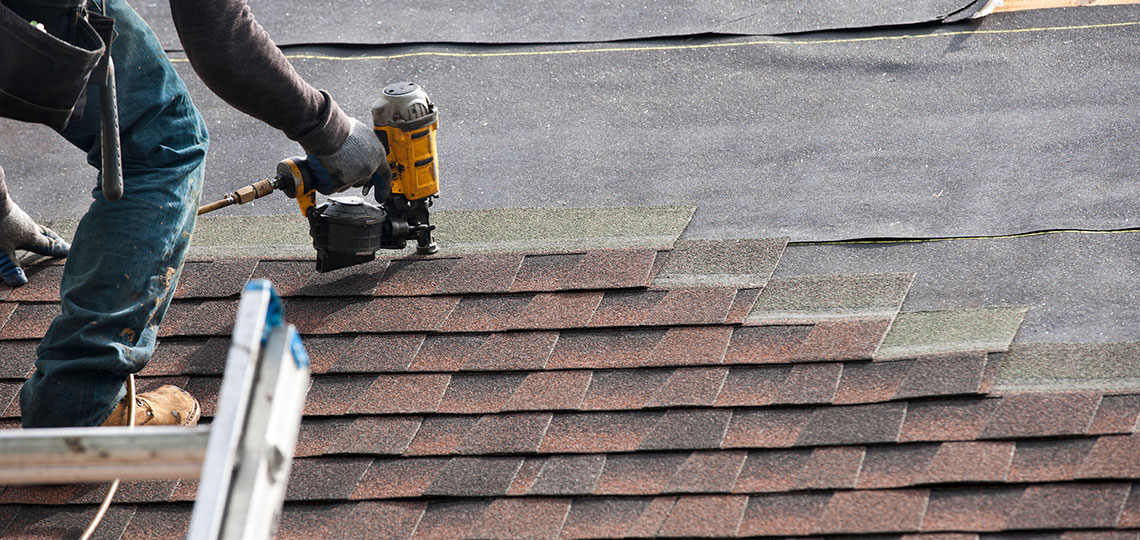Assessing the Solutions Provided by Roofing Companies in Gainesville Florida
Assessing the Solutions Provided by Roofing Companies in Gainesville Florida
Blog Article
Best Practices for Ensuring Correct Roof Air Flow
Making sure appropriate roof covering air flow is essential for the durability and performance of a roof. A balanced intake and exhaust air vent ratio, generally 1:300, plays a crucial role, with consumption vents ideally put at the reduced edge of the roof covering for awesome air entry and exhaust vents at the height for cozy air leave. Routine inspections to recognize clogs and preserve clear airflow are vital. In addition, keeping insulation away from vents is vital to stop airflow constraint. Recognizing these foundational aspects sets the phase for even more thorough insights right into setup and maintenance methods that can significantly enhance your roof's efficiency.
Understand Air Flow Basics
Effectively recognizing air flow basics is crucial for making certain the longevity and efficiency of roof. Effective ventilation alleviates moisture buildup and temperature level extremes in the attic, both of which can lead to significant structural damage over time. A well-ventilated roof helps in protecting against typical problems such as mold and mildew growth, timber rot, and ice dams, which can endanger the stability of the roofing products and the underlying frameworks.
The key goal of air flow is to promote the activity of air, permitting for a constant exchange between the interior and outside atmospheres. This balance is achieved via a mix of consumption and exhaust vents that function with each other to maintain ideal air flow. Intake vents, commonly located along the eaves or soffits, allow fresh air to go into the attic space, while exhaust vents, frequently positioned at or near the roofing ridge, allow warm, humid air to run away.
Trick aspects affecting the efficiency of roofing system air flow consist of appropriate placement, ample sizing, and ensuring that both consumption and exhaust vents are unobstructed. Routine inspection and upkeep are vital to recognize prospective blockages, damages, or inefficiencies in the air flow system, thus protecting the roofing's performance and resilience.
Kinds of Roofing Vents
Roofing vents play an essential function in keeping effective attic air flow and, by expansion, the total health of the roof system. Different kinds of roof vents are available, each with special advantages customized to specific roofing requirements.

Soffit vents are installed under the eaves and work in tandem with roofing vents to ensure a well balanced consumption and exhaust system. By permitting cooler air to get in from below, soffit vents help with the expulsion of hot air via upper vents. Gable vents, located on the outside walls of the attic room, deal another efficient solution, particularly in homes with gable roofings.
Assess Your Current Air Flow

Following, think about the age and problem of your roofing materials and air flow elements. Older systems might not follow present building regulations or may have weakened over time, minimizing their efficiency. Conduct a complete evaluation to recognize any indications of damage, such as rust, damage, or gaps that can compromise the system's performance.
Additionally, gauge the attic temperature level and moisture levels. Heats and moisture can show inadequate air flow - roofing companies in gainesville florida. Utilize a hygrometer and thermostat to obtain precise readings, comparing them with exterior problems. Relentless inconsistencies recommend possible issues that require dealing with.
Setup Best Practices
Efficient installment of roofing air flow systems is paramount for making sure ideal efficiency and durability. Correct setup begins with comprehending the specific air flow needs of the building and the roofing system it covers. This includes calculating the proper proportion of consumption to wear down vents, normally adhering to the 1:300 guideline, which states one square foot of air flow for each 300 square feet of attic floor area.

Consumption vents should be mounted at the roof covering's lower edge, often in the soffits, to permit awesome air to go into. Exhaust vents, on the other hand, need to be installed near or at the roofing's top to help with the departure of cozy, damp air.
Seal all vent connections thoroughly to prevent air Find Out More leaks and potential water infiltration. Use high-grade products and adhere to supplier guidelines to guarantee resilience and efficiency. Furthermore, incorporating ridge vents with baffles can substantially boost air movement efficiency by protecting against wind-driven rain and snow from entering the attic.
Inevitably, accurate setup of roof ventilation systems minimizes possible concerns such as mold development, ice dams, and architectural damages, making certain the roofing system's honesty and the structure's overall wellness.
Regular Maintenance Tips
Consistency in upkeep practices is essential to making sure the long-lasting efficiency of roof covering ventilation systems. Normal inspections are critical, preferably done biannually-- in the springtime and fall. Throughout these examinations, ensure that vents are complimentary of debris, nests, and other blockages that can impede air movement. Look for any type of indicators of dampness accumulation or mold and mildew, as these can indicate improper air flow or leaks (gainesville fl roofing companies).
Cleaning up the vents is another vital job. Utilize a soft brush or a vacuum cleaner to eliminate dust and debris from intake and exhaust vents. Beware not to harm the vent displays or louvers during the process. Furthermore, inspect the attic area for any kind of indicators of water damage, which can endanger the integrity of the roofing system.
Correct insulation is similarly essential. Make certain that attic insulation does not block the vents, as this can drastically restrict air flow. Reposition or replace it to preserve a reliable obstacle. if any insulation has shifted or settled.
Last but not least, replace any type of damaged or missing out on elements quickly. Busted vents, broken roof shingles, or shabby flashing can all add to inadequate air flow and should be attended to without hold-up. Normal upkeep ensures that the roofing ventilation system functions optimally, thus extending the lifespan of the roofing system itself.
Verdict
Ensuring appropriate roof ventilation is extremely important for maintaining the performance and toughness of a roof system. Adherence to the 1:300 consumption and exhaust vent proportion, coupled with the tactical positioning of vents, is important.
A well balanced consumption and exhaust vent proportion, commonly 1:300, plays a pivotal role, with intake vents preferably positioned at the lower side of the roofing system for trendy air entry and exhaust vents at the peak for cozy air exit. Intake vents, generally situated along the eaves or soffits, enable fresh air to get in the attic room, while exhaust vents, frequently located at or near the roof covering ridge, allow warm, humid air top article to leave.
Soffit vents are set up under the eaves and job in tandem with roofing system vents to make sure a well balanced intake and exhaust system. By allowing cooler air to enter from below, soffit vents help with dig this the expulsion of warm air with top vents. Adherence to the 1:300 intake and exhaust vent proportion, combined with the strategic placement of vents, is vital.
Report this page